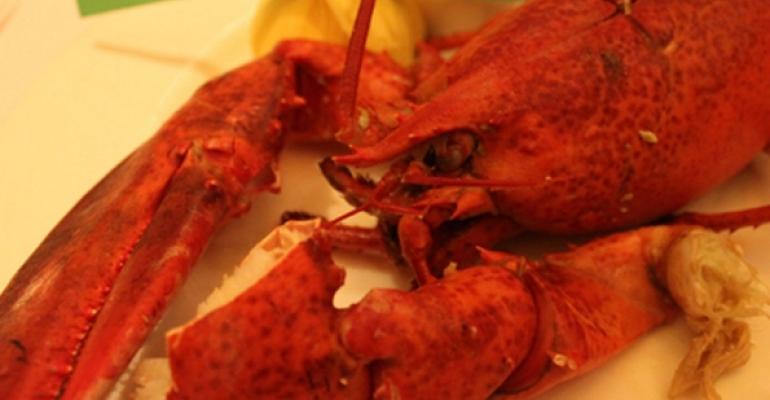Close your eyes as you taste a lobster from Fourchu and you could be transported to a tiny fishing village on an inlet off the blustery, windswept coast of Nova Scotia’s Cape Breton Island. You could taste the briny waters of that particular section of the frigid North Atlantic. You could be at one with the Scottish settlers who have for centuries made their livings by plying those waters.
But first you’d have to know that Fourchu is, in fact, such a village with such inhabitants.
Back story is important when it comes to high-end specialty products like the lobster of Fourchu, a hamlet with the good fortune of having Dorothy Cann Hamilton as its champion.
Fourchu is the ancestral homeland of Hamilton, the founder and head of the International Culinary Center, formerly known as the French Culinary Institute, in New York, and she has made it her mission to introduce the high-end dining world to her favorite lobster.

She has gone about it intelligently. Several years ago she invited a number of prominent New York chefs to Fourchu to experience the lobster harvest. Cesare Casella of Salumeria Rosi Parmacotta, Dan Barber of Blue Hill, and others took her up on the offer and were sold on the product and what Hamilton calls its “meroir.”
She borrowed that term from artisanal oyster producers, who derived it from winemakers, who extol their products’ terroir, or distinctive characteristics derived from its geography.
“Terre” is French for “land;” “mer” is French for “sea.”
She offered the lobster as a special last summer at the ICC’s restaurant, L’Ecole, just as Fourchu’s government-mandated 10-week season was drawing to a close.
 This year, she introduced the lobster at the beginning of the summer season, and it's available now. She has made the ICC’s catering arm the sole distributor of the product, importing 8,000 pounds of it each week. Barber, Casella and other high-end New York chefs, including Daniel Boulud of Daniel (and other restaurants), Gramercy Tavern executive chef Michael Anthony, Dan Kluger of ABC Kitchen, Paul Liebrandt of Corton and Ben Pollinger of Oceana, have said they will be serving it, too.
This year, she introduced the lobster at the beginning of the summer season, and it's available now. She has made the ICC’s catering arm the sole distributor of the product, importing 8,000 pounds of it each week. Barber, Casella and other high-end New York chefs, including Daniel Boulud of Daniel (and other restaurants), Gramercy Tavern executive chef Michael Anthony, Dan Kluger of ABC Kitchen, Paul Liebrandt of Corton and Ben Pollinger of Oceana, have said they will be serving it, too.
I’ve tried Fourchu lobster twice — last summer and earlier this week — both times at L’Ecole while dining with Hamilton. She seemed genuinely interested in knowing whether myself and her other guests thought it tasted different from other lobsters.
I think it did. It was possibly sweeter than the average lobster, and its brininess was more nuanced and complex than normal. Whether that had to do with the fact that it’s from Fourchu or that, at least when I ate it this year, it had arrived that morning from Nova Scotia’s capital, Halifax, hand-carried by Hamilton’s importer — a seafood expert — and then prepared by Hamilton’s staff of chefs, I can’t say.
But although Hamilton has a personal affection for Fourchu lobster, she told me her agenda was more on decommodifying lobster as a whole. Just as wine made from grapes from one side of a hill can taste different from wine made from grapes from the other side of that hill, or oysters from one estuary bank can have different qualities from oysters from farther into the bay, so do lobsters from different waters taste different from each other, she said.
By extolling the unique qualities of the lobster of a particular bay, harbor or community, Hamilton said she hoped to help those communities take more control of their own destiny.
Contact Bret Thorn at [email protected].
Follow him on Twitter: @foodwriterdiary

